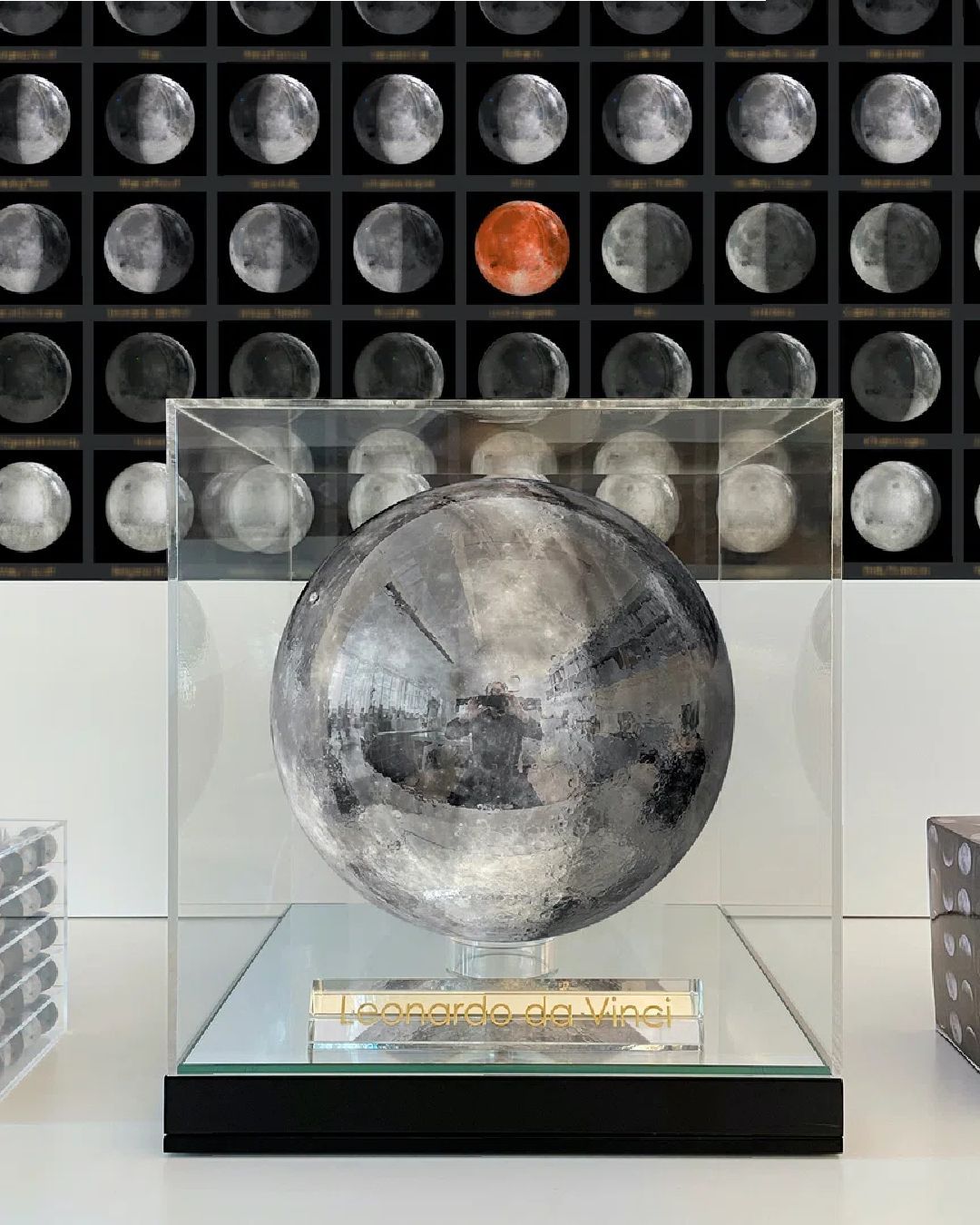
What does it mean for a work by Jeff Koons to be on the moon? Avant-garde or pollution?
Recently, a sculpture by the artist Jeff Koons has landed on the Moon. Called “Moon Phases”, it is located inside the American lander Odysseus, which landed on lunar soil on February 23 after a week-long journey aboard a SpaceX Falcon 9 rocket. The lander, belonging to the private company Intuitive Machines, became the first US spacecraft to make a controlled landing on the Moon since the Apollo 17 mission in 1972. There are no people on Odysseus, only a series of instruments (in addition to Koons' artwork). The current mission, named IM-1, is largely demonstrative and serves to verify the capabilities of automatic landing. IM-1 is part of the Commercial Lunar Payload Services (CLPS) program initiated by NASA to send small robotic landers to the Moon with the aim of exploring its surface, collecting data on its characteristics, and preparing for future crewed missions. In the coming years, projects like Odysseus could become more frequent, also because NASA is seeking to reduce the costs of lunar travel. Since 2018, the US space agency has been collaborating more with private companies, unlike in the past. In this way, it believes it can save significant amounts of money by entrusting them with the development of space missions considered "minor". Companies like SpaceX, founded by Elon Musk, thus have direct responsibility for organizing individual projects and finance them through agreements with other entities and organizations interested in transporting specific equipment into space – for example, to conduct particular experiments – as well as various objects.
What is Jeff Koons' project about?
Moon Phases are on the Moon! I am grateful to be part of this historic lunar landing with Intuitive Machines, NASA, SpaceX, 4Space & NFMoon. Each Moon Phase is represented by the name of an individual who has made a significant contribution to humanity
— Jeff Koons (@JeffKoons) February 27, 2024
Photo 3: @Int_Machines pic.twitter.com/gXm6496qHw
Koons' initiative was realized in collaboration with Pace Gallery, the new gallery representing the American artist. The sculpture sent to the Moon consists of 125 stainless steel spheres about 2.5 centimeters in size, each representing a lunar phase as seen from Earth or space. Each model is associated with the name of a historical figure – from Plato to David Bowie, from Leonardo da Vinci to Gandhi. The orbiting artwork also corresponds to a series of NFTs (Non-Fungible Tokens), special digital authenticity certificates tracked, which can be purchased on a dedicated platform owned by Pace Gallery. Each NFT includes an image of one of the 125 steel spheres. The project, described by the artist on a dedicated website, has been from the outset geared towards Web3, what many consider the next and imminent evolution of the Internet. It plays with the formula "to the moon", used by cryptocurrency enthusiasts to describe a peak in the value of a token – along with NFTs, cryptocurrencies are considered one of the defining features of Web3. Jeff Koons isn't the first person to send art to the moon, but it had been over 50 years since such a thing happened. In 1971, a work by the Belgian artist Paul Van Hoeydonck arrived on the celestial body, thanks to the collaboration of the Apollo 15 crew members. Two years earlier, artists Andy Warhol, Robert Rauschenberg, John Chamberlain, Claes Oldenburg, Forrest Myers, and David Novros had collaborated to send their joint project to the Moon aboard Apollo 12.
We're sending a bit of everything into Space
[img]GHFqIxFWEAAPe9k.jpeg
The increased involvement of private entities in space activities has led to increased interest in sending, beyond Earth's atmosphere, particular objects – mostly as symbolic actions. This includes artworks, among other things. The business of burials on the Moon, for example, surprisingly works. Celestis is a company that, for about $13,000, attempts to bring a small portion of cremated ashes of individuals to the lunar surface, booking a small space on individual rockets as "secondary cargo." However, fees vary greatly depending on the type of experience desired: a "simple" trip into space, which then involves a return to Earth, costs about $3,000. Despite criticisms and concerns, for companies organizing these projects, all this represents an important business opportunity. Moreover, this is a context where there are almost no rules, and the tendency for now is not to discourage such initiatives. There are fears, however, that stricter rules could jeopardize the overall growth of the private space exploration sector – something NASA is very concerned about. Yet, critics argue that when there are more opportunities to reach the Moon at lower costs, the materials and objects transported to the lunar surface will also increase, many of which will eventually inevitably become waste.
















































